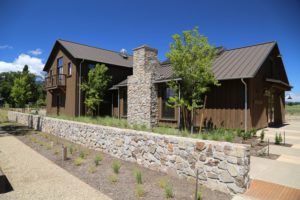
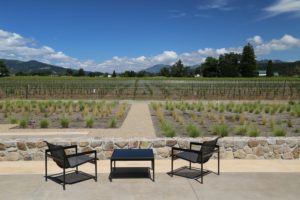
 Wheeler Farms. The Wheeler Farms estate property is located on 11.5 acres off of Zinfandel Lane just south of the city of St. Helena. For those curious about its history (and it is fascinating), the original stone winery was built in 1880 (along with a separate distillery for producing brandy) by Charles Wheeler and was conveniently located next to the train tracks about 1/2 mile to the west of the current Wheeler Farms Winery. It operated until shut down by Prohibition. The only visible remnant of this winery is an old stone wall – seen just east of the train tracks almost at the intersection of Highway 29 and Zinfandel Lane. According to a Napa Register article from January 1928, this old winery was demolished in 1928. This was also the site of a small train station called Pine Station or Bello Station, which was used by the Wheelers to ship their products.
Wheeler Farms. The Wheeler Farms estate property is located on 11.5 acres off of Zinfandel Lane just south of the city of St. Helena. For those curious about its history (and it is fascinating), the original stone winery was built in 1880 (along with a separate distillery for producing brandy) by Charles Wheeler and was conveniently located next to the train tracks about 1/2 mile to the west of the current Wheeler Farms Winery. It operated until shut down by Prohibition. The only visible remnant of this winery is an old stone wall – seen just east of the train tracks almost at the intersection of Highway 29 and Zinfandel Lane. According to a Napa Register article from January 1928, this old winery was demolished in 1928. This was also the site of a small train station called Pine Station or Bello Station, which was used by the Wheelers to ship their products.
And across the highway from the old winery stone walls and just south of Zinfandel Lane is another Wheeler era structure; this one is a grand craftsman home built by John Hoffman Wheeler (Charles’s son who continued the Wheeler Farm operations); today its owned by Dave and Yolanda Del Dotto (Del Dotto Vineyards).
Grapes were first planted on the site by Matthew Vann in 1865 and were primarily Mission grapes using cuttings provided by John Patchett, Napa Valley’s first ever winery owner. Matthew had purchased 150 acres from Maria Bale in 1853 (the widow at the time of Edward Bale who was given this land from General Vallejo). Incidentally Bale’s homestead was anchored by a two-story adobe home on the west end of what is now Whitehall Lane (a short drive from Wheeler Farms). This structure stood until 1931 when it was destroyed by a farmer. Bale owned one of the early vineyards in the Napa Valley here – having planted Mission grapes in the 1840s.
It was Vann who sold part of his property to Charles Wheeler in 1879.
And it was the Vann family that played a role in Napa County’s last lynching – a story detailed nicely by Todd Shulman in his book, Murder and Mayhem in the Napa Valley. Briefly Matthew’s son Robert would hang out at one of the brothels in St. Helena; one day he and some friends caused trouble at the brothel including throwing a rock through one of the windows. One of the customers, Jack Wright shot Robert who ultimately died a day later. Jack was arrested and jailed in Napa and then moved to the St. Helena jail where a mob broke him out and left his body hanging from the York Creek Bridge just north of St. Helena – where one of the Beringer brothers of Beringer Brothers Winery discovered the murder.
Incidentally the last lynching in neighboring Sonoma County wasn’t until much later in 1920 – described by eyewitness Clarence H. “Barney” Barnard in a 1985 interview to Sonoma County historian Gaye LeBaron – Clarence died in 2008 at the remarkable age of 108. But that is another story for another time!
Wheeler Farms is named in honor of the Wheeler family, whose property along Zinfandel Lane extended to the other side of Highway 29 and historically was known as Wheeler Farms. By almost 1940 at the height of the family’s land holdings, the property encompassed some 400 acres with the current estate planted to prunes at that time. Charles Wheeler’s background was in grain and milling; he was part of the group that built the first grain elevator in California located in the city of Vallejo.
Charles first moved to the Napa Valley in 1870 and began purchasing land. But more significant to Napa’s history, he was a founding member of the St. Helena Vinicultural Club in 1875 along with the president at that time, Charles Krug. This was the predecessor organization to the current Appellation St. Helena. Charles’ son Rollo would take ownership of the winery in 1882; he called it the R.M Wheeler Winery (named after himself). His father continued to oversee and own the surrounding land. An October 13, 1884, article in the St. Helena Star references two Heald Steam Crushers operating on the property, one for red and one for white grapes. Each one was estimated to process 100 tons of fruit in a day’s work. And the article also stated that about 90,000 gallons of wine would be processed that year.
Tragically Rollo died prematurely in 1889 when a horse he was caring for kicked him in the head. Charles’ other son John Wheeler took over the holdings at this point and changed the name of the winery to J.H Wheeler, after his own name.
John learned viticulture from his father; he was a prominent vintner in the Napa Valley both with a sizable property as well as his vineyard related entrepreneurial efforts and his ability to produce carbon disulfide for use in the vineyards and ultimately his non-successful efforts to combat phylloxera. He was also president of California’s State Board of Viticulture. Over the years the property has had a diverse workforce – ranging from Japanese (who lived on the property) to German POWs at the end of World War II (reference the POW camp site below what is Rector Reservoir along the Silverado Trail).
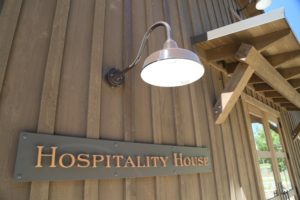
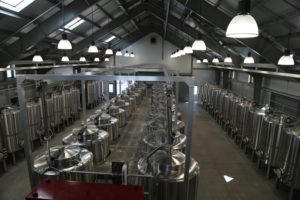
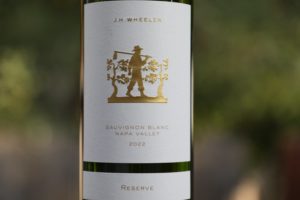 And like many other vintners in the valley, when the Volstead Act became law (Prohibition) in 1919, John removed approximately 100 acres of grapevines and replaced them with a diversity of fruit orchards. Wheeler Farms was once planted to primarily prunes and walnuts with smaller sections of citrus trees. And such was the impact of Prohibition that this property was not planted to grapes again until the 1960s.
And like many other vintners in the valley, when the Volstead Act became law (Prohibition) in 1919, John removed approximately 100 acres of grapevines and replaced them with a diversity of fruit orchards. Wheeler Farms was once planted to primarily prunes and walnuts with smaller sections of citrus trees. And such was the impact of Prohibition that this property was not planted to grapes again until the 1960s.
The property was purchased in 2014 by long time Napa Valley vintners Bart and Daphne Araujo; they pivoted somewhat after selling their iconic Araujo Estate and Eisele Vineyard. The previous owners, Kohala Investments, a Japanese firm acquired the property in 2009 from the great-great-granddaughter of Charles Wheeler. Their intention was to build a winery on site but after the tsunami in Japan in 2011 they decided against this and ultimately sold the land. And in November 2024 the Araujo’s sold Wheeler Farms to Suzanne Deal Booth, the owner of Bella Oaks Winery.
The Araujo’s founded Araujo Estate (now the Eisele Vineyard) in 1990 and by the time they sold the winery and property in 2013 to the owners of Bordeaux based Château Latour, they had built Araujo into one of the country’s most prized wine estates with wines highly coveted by serious collectors and other wine enthusiasts.
They continued their focus on premium wines by founding Accendo Cellars in 2013. These wines are made at Wheeler Farms (founded 2014) and feature a Sauvignon Blanc and several red wines. Rather than focus on a single vineyard site (as was the case at Araujo), these grapes are sourced from exceptional sites in select parts of the valley, including from select vineyards they personally own.
The vineyard landscape of the Napa Valley has changed dramatically over the decades – and this property is a good example of this. Original grape plantings included Carignan, Johannisberg Riesling, Gutadel, and Golden Chassales among other varieties no longer economically viable to grow in the Napa Valley. Today the property is planted to six acres of Cabernet Sauvignon and two acres to Sauvignon Blanc.
In a nod to some of the agricultural diversity originally on the property, about 1/2 acre (prime vineyard land) is planted to a variety of stone fruit trees. A variety of vegetables are also grown in the raised beds directly in front of the winery. In part, these provide ingredients for selected dinners and various culinary offerings using their commercial kitchen. The property also houses chickens and beehives.
The winery itself is state of the art – a cellar underground follows the entire footprint of the main winery building. Tanks are fairly small (in the 4–5-ton range); each one contains a pump which simplifies the amount of work during harvest (the alternative is moving pumps from tank to tank). Each tank can be converted to open or closed top during fermentation. And every tank is located under a hydraulic arm which can be moved between tanks to facilitate punch-downs as needed. The winery also owns an optical sorter used for selecting cleaner grapes and ease of sorting.
And the winery facility is used by a limited number of winery clients.
Olive Trees
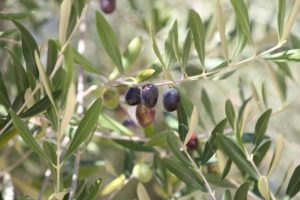 Dave Dexter of DEXTER Estate Landscapes first notified the Araujo’s about a large property in Winters in neighboring Yolo County, about an hour due east of St. Helena. Wheeler Farms initially produced olive oil from some of these trees. The owner had planned on developing the site, but after the county halted his plans, he planted olive trees. However, he was never able to turn his agricultural operations into a successful business, so the trees were sold.
Dave Dexter of DEXTER Estate Landscapes first notified the Araujo’s about a large property in Winters in neighboring Yolo County, about an hour due east of St. Helena. Wheeler Farms initially produced olive oil from some of these trees. The owner had planned on developing the site, but after the county halted his plans, he planted olive trees. However, he was never able to turn his agricultural operations into a successful business, so the trees were sold.
Bart remembers joining Dave at the site to select only the healthiest of the trees. They were dug out of the ground moved from the orchard in Winters to Wheeler Farms; olives are now harvested from 80 trees, (various Italian varieties), to bottle their own very limited production Napa Valley estate grown olive oil.
Label Design
Bart and Daphne worked with acclaimed graphic designer Chuck House of Icon Design Group to create the original Wheeler Farms label. Chuck is part of a team that has been responsible for numerous iconic Napa & beyond wine labels. Wanting to honor history on the label representing a specific time period (the late 1800’s), Chuck researched old USDA records and located images depicting the ‘ideal’ grape bunches with images of a number of varieties. He adapted these images for their own labels – including a Sauvignon Blanc and Cabernet Sauvignon.
However, the wines were rebranded starting in 2018 to J.H. Wheeler, to honor John Wheeler, including even more noteworthy, a change in their vineyard sourcing. Graphic designer Michael Vanderbyl of Vanderbyl Design created the new look of the label.
Select wines
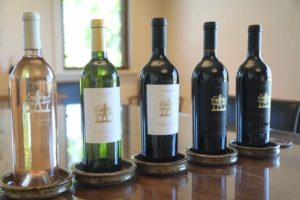
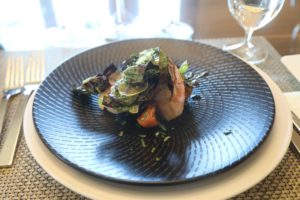
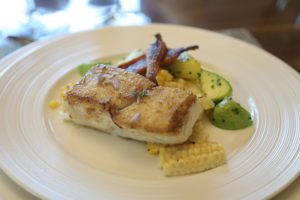 Whites
Whites
The 2022 J.H. Wheeler Sauvignon Blanc Napa Valley Reserve is deep straw in color; the energetic and elegant bouquet is bright, fresh, minerally and citrusy. It offers aromas of lemongrass, lemon juice, lime zest, citrus blossom, jasmine, a beautiful note of white peach which reminded us of harvesting such fruit in California’s Central Valley in early summer and passion fruit. Incredibly balanced with a restrained richness across the palate, this wine delivers pure pleasure. It reveals flavors of nectarine, a honeyed note, mandarin orange, lime without being tart and not fully ripe pineapple. The supple texture nicely complements the richly fruited, persistent and lively finish. We often think of pairing Sauvignon Blanc with a variety of fresh seafood, preferably bivalves but this wine drinks beautifully by itself.
The 2020 J.H. Wheeler Sauvignon Blanc takes its inspiration from Sancerre. The wine is sourced from both the Sauvignon Blanc block growing in front of the winery and from Pestoni Vineyard in Rutherford; medium golden in color, it offers plenty of floral intrigue including aromas of peach and nectarine. Also shows honeysuckle, additional tropical notes and a hint of vanilla sweetness as the bouquet fully opens. Rounded, balanced and very flavorful across the palette. The long satisfying finish is bright and mouthwatering but with no greenness or sharpness of acidity. Very nicely done.
The 2019 J.H. Wheeler Rosé of Cabernet Franc is from vines grown specifically to make rosé (no saignée or bleeding of the juice during the winemaking). The grapes were sourced from the Crocker Vineyard in St. Helena. Light copper in color, shows floral notes on the bouquet including dried rose petal along with wild strawberry. Very balanced. Offers flavors of strawberry and raspberry complemented nicely by a citrus nuance including a lemon / lime note on the finish. Great acidity.
Their inaugural release of the Sauvignon Blanc was from the 2016 vintage. The 2016 Wheeler Farms Sauvignon Blanc is pale straw color in the glass with notes of citrus blossom and orange peel on the bouquet. This wine was 100% fermented in stainless steel tanks. Balanced with good acidity. Fresh and youthful. It shows lively on the palate with a rich intensity of flavor.
Reds
The 2019 J.H. Wheeler Cabernet Sauvignon, Vine Hill Ranch Vineyard (Oakville) is deep ruby and nearly opaque in the glass; the bouquet is primarily expressive of the fruit with the oak a lighter complementary characteristic. This wine offers aromas of blackberry and blackberry jam, boysenberry, Pakistani mulberry and Santa Rosa plum along with assorted dried herbs including sage and mocha and cocoa powder. Its aromatic intensity is pronounced. Equally as intense as the bouquet is the palate with rich flavors of blackberry, boysenberry and ripe mulberry. The finish lingers with a light warmth of alcohol and densely packed gritty tannins which run neck and neck with the fruit on the extended finish. A drying and dusty character is broadly distributed and exceptionally long lasting across the palate after the fruit finally dissipates. This is a generous showing from one of Napa Valley’s most exceptional sites.
The 2019 J.H. Wheeler Missouri Hopper Vineyard Cabernet Sauvignon is deep ruby, opaque and sports an amaranthine rim. Its aromatics are open knitted immediately upon opening and are not shy in any way. Flirting with opulence the bouquet offers scents of blackberry, boysenberry pie, warm chocolate brownie, cloves and a generous helping of recently toasted oak. The palate is richly flavored with ripe blackberry, boysenberry spread, and dark cherry. The finish lingers with grainy, gravelly and chewy textured oak and grape tannins which anchor a persistent and intense darker fruit filled finish. There is also a crushed peppercorn note and dryness which lingers. This wine has plenty of years ahead of it with the proper cellaring. Drinking this bottling made us want to reach for a thick piece of medium rare tri-tip from the BBQ.
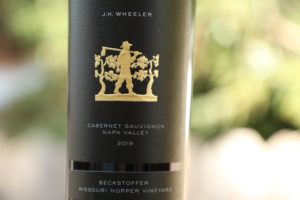 The 2017 J.H. Wheeler Missouri Hopper Vineyard Cabernet Sauvignon is dark ruby in color with purplish tinges on the rim. Offers aromas of black cherry and plum. Shows a ripeness but is not overripe. Also offers notes of old cedar box and leather. The tannins display a tight grasp but are not course in texture. Rather, they are chewy and long lasting with a noticeable density. The finish features a bright lift of acidity. This wine is structured to last. Along with Georges III, the Missouri Hopper Vineyard is part of Beckstoffer’s Heritage Vineyards, six historical and premium sites in the Napa Valley known for their high quality of grapes.
The 2017 J.H. Wheeler Missouri Hopper Vineyard Cabernet Sauvignon is dark ruby in color with purplish tinges on the rim. Offers aromas of black cherry and plum. Shows a ripeness but is not overripe. Also offers notes of old cedar box and leather. The tannins display a tight grasp but are not course in texture. Rather, they are chewy and long lasting with a noticeable density. The finish features a bright lift of acidity. This wine is structured to last. Along with Georges III, the Missouri Hopper Vineyard is part of Beckstoffer’s Heritage Vineyards, six historical and premium sites in the Napa Valley known for their high quality of grapes.
The 2018 J.H. Wheeler Georges III is sourced from the B2b and the B2c blocks, two of the most premium parts of this vineyard. Perhaps one commonly associates Georges III Vineyard entirely with valley floor fruit, but in actuality part of the vineyard is planted on slightly higher more coveted bench-land soils. The wine is dark ruby in color with aromas of dust, cedar box and plum. A savory note shows deeper into the aromatics as the bouquet opens. Offers a softness initially, but this is only noticeable briefly on the entry; this is a full-bodied Napa Valley Cabernet Sauvignon with layers of flavor including a richness of darker fruits. Sturdy long lasting tannins leave a memorable grip along with juicy bright acidity. Very age worthy.
The 2018 J.H. Wheeler Napa Valley Cabernet Sauvignon is 92% Cabernet Sauvignon and 8% Cabernet Franc. Winemaker Nigel Kinsman crafted this wine to be easily identifiable as a Napa Valley Cabernet Sauvignon. He has done so. Offers aromas of dust, leather and darker fruits including blackberry, boysenberry and plum. Also hints of mocha. Plenty of aromatic depth. The tannins are dusty, well integrated with a medium grip and are long lasting. Sourced from several vineyards including from younger vines whose fruit may eventually be selected for single vineyard wines.
The 2014 Wheeler Farms Napa Valley Cabernet Sauvignon shows savory notes on the bouquet with aromas of dried herbs and a subtle hint of dust that is more in the background. A sweetness of fruit shows as the bouquet continues to open. Balanced with mouthwatering flavors and acidity. The tannins are drying tannins part of a fairly robust structure anchoring the finish showcasing both oak and fruit tannins.
—
Visits are for serious wine enthusiasts and collectors. A tasting is always a seated personalized experience in a space that feels like entering someone’s house. Culinary offerings are an integral part of an experience with seasonal ingredients sourced from the property. Their culinary team is exceptional talented. An open kitchen overlooks the main room with an adjoining side room available for even more intimate tastings.
A number of premium brands use the winery as part of the Wheeler Farms Winemaking Partner (WP) program for both production and hospitality purposes. The Portfolio Tasting showcases select wines from some of these brands. With a diversity of both premium producers and types of wines available, these tastings can be customized based on preference. Tastings often provide access to personalized visits with the winemakers or the owners behind the brands.
For more information and to join their mailing list, visit: www.wheelerfarmswine.com
Wheeler Farms Winery
Remaining Stone Wall from Original Winery
Video, Sommvivant






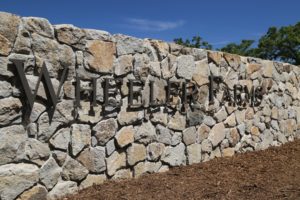
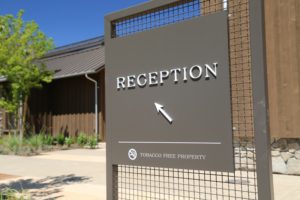
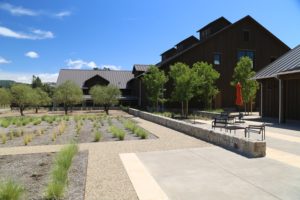
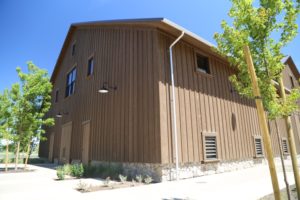
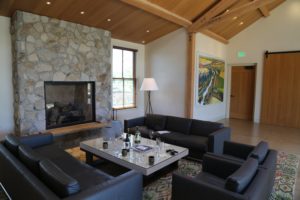
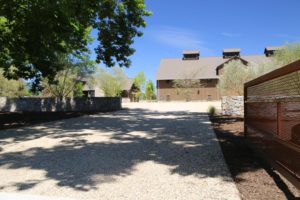

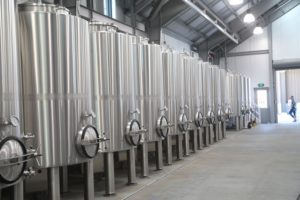
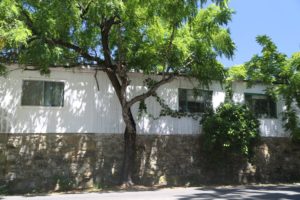
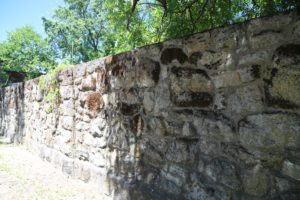
Leave a Reply